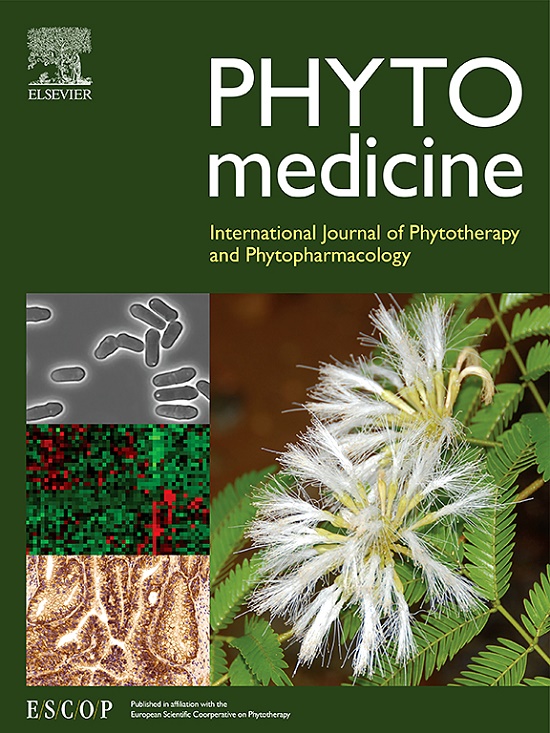Targeting membrane integrity and imidazoleglycerol-phosphate dehydratase: Sanguinarine multifaceted approach against Staphylococcus aureus biofilms
IF 6.7
1区 医学
Q1 CHEMISTRY, MEDICINAL
引用次数: 0
Abstract
Background
Staphylococcus aureus is an opportunistic pathogen capable of readily forming biofilms, which can result in life-threatening infections involving different organs. Sanguinarine are benzo[c]phenanthridine alkaloids extracted from the Sanguinaria canadensis L. (Papaveraceae), which have a wide range of biological activities. Previous reports have shown that sanguinarine is able to induce an elevation of ROS to exert an anti-S. aureus effect. Nevertheless, the specific mechanism of action of sanguinarine against S. aureus biofilms remains unexplored.
Purpose
The objective of this study was to elucidate the target site of sanguinarine in S. aureus, as well as to investigate its mechanism of antimicrobial action and its interference with biofilm formation. Additionally, the study aimed to provide further evidence supporting the use of sanguinarine as an alternative to traditional antibiotics.
Methods
Initially, we assessed the in vitro anti-S. aureus properties of sanguinarine through a series of methodologies, including MIC assays, time-dependent assays, and resistance development studies. Secondly, we explored the antimicrobial mechanism of sanguinarine using TEM, membrane permeability assays, and membrane fluidity assays. Subsequently, the mechanism by which sanguinarine interferes with S. aureus biofilm formation was preliminarily analyzed in vitro. Additionally, the interaction between sanguinarine and imidazoleglycerol-phosphate dehydratase (IGPD) was investigated using bio-layer interferometry assays, circular dichroism spectroscopy, molecular docking, and site-directed mutagenesis to further elucidate the role of sanguinarine in biofilm disruption. Finally, the therapeutic efficacy of sanguinarine was evaluated in vivo using mouse models of biofilm and bacteremia.
Results
Herein, sanguinarine demonstrated notable antimicrobial properties and interfering effects on biofilm formation. Mechanistic investigations revealed that sanguinarine exerts its antimicrobial action by dissipating the proton motive force in bacteria and compromising the integrity and functionality of the cytoplasmic membrane. Furthermore, sanguinarine was found to regulate IGPD expression and inhibit L-histidine synthesis, thereby interfering S. aureus biofilm formation. Consequently, due to its polypharmacological effect, sanguinarine significantly reduced the S. aureus load in mouse organs and the formation of biofilm on the surface of implants in vivo without any resistance.
Conclusions
In this study, we demonstrated that sanguinarine can exert antibacterial and interfere with biofilm formation by disrupting the cell membrane of S. aureus and targeting IGPD. These findings suggest that sanguinarine holds potential for further development as a novel antibiotic to combat biofilm-associated infections.

求助全文
约1分钟内获得全文
求助全文
来源期刊

Phytomedicine
医学-药学
CiteScore
10.30
自引率
5.10%
发文量
670
审稿时长
91 days
期刊介绍:
Phytomedicine is a therapy-oriented journal that publishes innovative studies on the efficacy, safety, quality, and mechanisms of action of specified plant extracts, phytopharmaceuticals, and their isolated constituents. This includes clinical, pharmacological, pharmacokinetic, and toxicological studies of herbal medicinal products, preparations, and purified compounds with defined and consistent quality, ensuring reproducible pharmacological activity. Founded in 1994, Phytomedicine aims to focus and stimulate research in this field and establish internationally accepted scientific standards for pharmacological studies, proof of clinical efficacy, and safety of phytomedicines.
文献相关原料
公司名称
产品信息
索莱宝
isopropyl β-D-1-thiogalactopyranoside (IPTG)
 求助内容:
求助内容: 应助结果提醒方式:
应助结果提醒方式:


